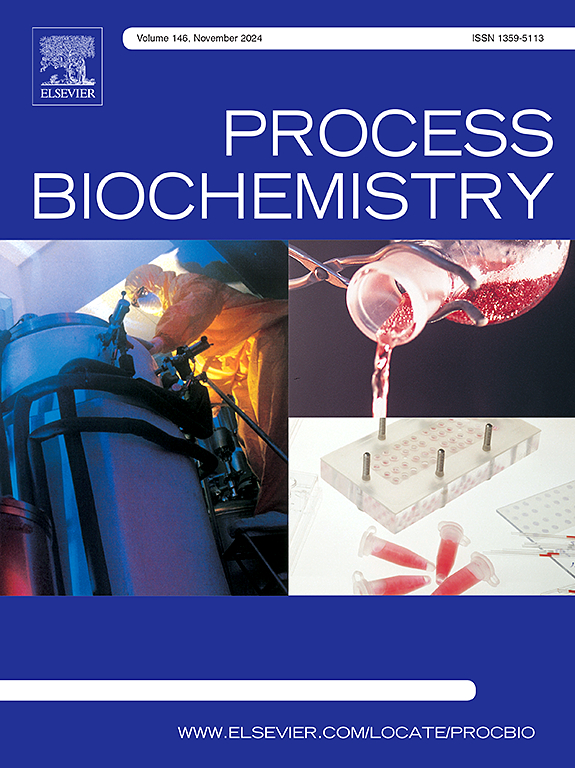Proteome analysis of the spontaneous oscillatory behavior in 1,3-propanediol production from glycerol by Clostridium butyricum
IF 3.7
3区 生物学
Q2 BIOCHEMISTRY & MOLECULAR BIOLOGY
引用次数: 0
Abstract
The oscillatory cultures in biological systems offer an opportunity for understanding the metabolic mechanism, regulation, and constraint. This study focuses on the particular spontaneous oscillation during continuous 1,3-propanediol (1,3-PDO) fermentation by Clostridium butyricum. A sustained oscillation occurred was triggered by 88 g/L glycerol at a dilution rate of 0.048 h−1. The oscillatory behavior started at approximately 35 h and sustained for over 530 h with an average oscillation period of 35 h. Kyoto Encyclopedia of Genes and Genomes (KEGG) enrichment analysis indicated that a total of 46 proteins associated with glycerol metabolism were characterized. Aldehyde-alcohol dehydrogenase (AdhE), pyruvate:ferredoxin (lavodoxin) oxidoreductase (PFOR), and L-lactate dehydrogenase (LDH) with high centrality degree and compact coefficient were identified as the most crucial proteins in the protein-protein interaction network. Various proteins involved in Fe2+ regulation, such as AdhE, PFOR, glycerol dehydrogenase, 1,3-propanediol oxydoreductase, glycerol dehydratase activating protein, pyruvate formate lyase, nitrogenase, ferredoxin:NADP+ reductase, and hydrogenase were crucial for the spontaneous oscillation. These findings demonstrate that the level of Fe2+ influences the coordination of spontaneous oscillation in glycerol conversion to 1,3-PDO in C. butyricum. Finally, a sustained oscillatory behavior induced in response to a change in Fe2+ concentration further verifies Fe2+ limitation as a valve to generate oscillation.
求助全文
约1分钟内获得全文
求助全文
来源期刊

Process Biochemistry
生物-工程:化工
CiteScore
8.30
自引率
4.50%
发文量
374
审稿时长
53 days
期刊介绍:
Process Biochemistry is an application-orientated research journal devoted to reporting advances with originality and novelty, in the science and technology of the processes involving bioactive molecules and living organisms. These processes concern the production of useful metabolites or materials, or the removal of toxic compounds using tools and methods of current biology and engineering. Its main areas of interest include novel bioprocesses and enabling technologies (such as nanobiotechnology, tissue engineering, directed evolution, metabolic engineering, systems biology, and synthetic biology) applicable in food (nutraceutical), healthcare (medical, pharmaceutical, cosmetic), energy (biofuels), environmental, and biorefinery industries and their underlying biological and engineering principles.
 求助内容:
求助内容: 应助结果提醒方式:
应助结果提醒方式:


